Table Of Contents
- 1Introduction
- 2What is Workflow Automation?
- 3How Education Workflow Automation Works
- 4Benefits of Using Workflow Automation in Higher Education
- 5How a Student Engagement Platform Improves Workflows
- 6Best Workflow Automation Solutions for Higher Education
- 720 Best Education Workflow Automation Examples to Improve Efficiency
- 8How to Set Up Workflow Automation for Your Educational Institution
- 9Top 24 Education Workflow Automation Tools in 2025
- 10How to Choose the Right Education Workflow Automation Solution
- 11Conclusion
Introduction
Automation in higher education is revolutionizing the way institutions operate by streamlining administrative processes, improving efficiency, and enhancing the overall student experience. From admissions and grading to communication and reporting, workflow automation minimizes repetitive manual tasks, enabling staff to focus on more strategic and impactful activities that drive institutional success.
According to a recent Gallup survey, nearly two-thirds of teachers used artificial intelligence in the past school year, and weekly users saved almost six hours of work per week. This shows how AI tools are already making a significant impact on education workflows.
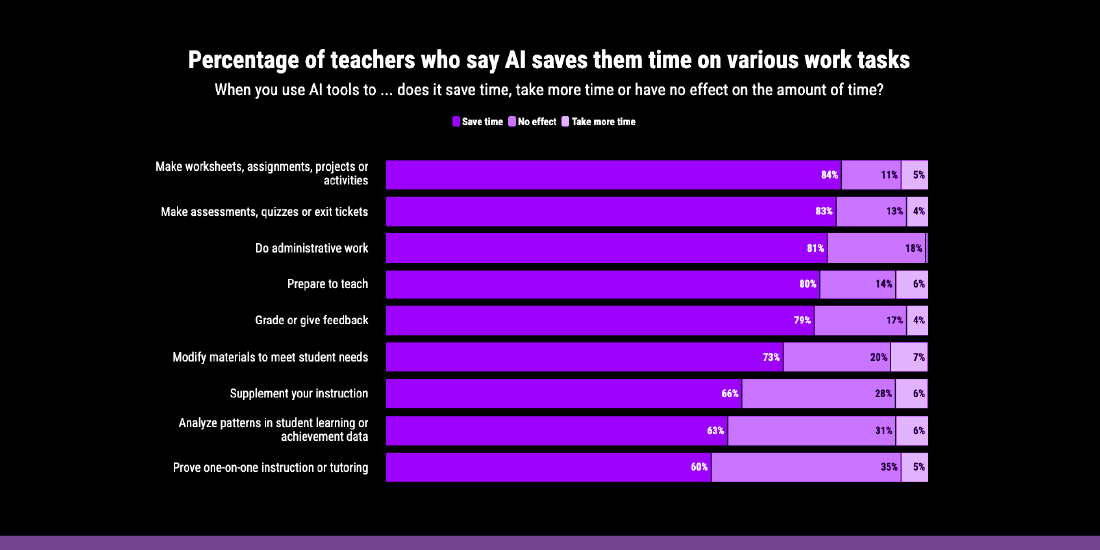
In this blog, we explore how higher education institutions can leverage workflow automation to operate smarter, faster, and more effectively.
What is Workflow Automation?
Workflow automation is the process of using technology to perform repetitive or manual tasks automatically. Instead of relying on people to handle every small step—like entering data or sending reminders—automation software manages these actions in the background.
The main goal of workflow automation is to save time, reduce errors, and improve efficiency by streamlining day-to-day operations.
Automation tools can range from simple systems that send automated emails to advanced platforms powered by artificial intelligence (AI) that make data-driven decisions and execute complex tasks.
A typical automated workflow includes:
- Triggers: Actions or events that start a process (e.g., a student submitting a form).
- Conditions: Rules that determine what happens next.
- Automated reminders: Notifications sent to keep tasks on track.
- Time settings: Scheduled actions that ensure deadlines are met.
Once set up, these workflows run smoothly on their own, helping administrators focus on more important tasks while ensuring accuracy and consistency across processes.
How Education Workflow Automation Works
Automation in higher education leverages advanced tools—such as automation software, CRM systems, no-code platforms, and APIs to streamline academic and administrative workflows. It helps institutions digitize processes, automate approvals, send real-time notifications, and minimize manual work. According to the 2025 Future-Proofing School Communications report by NSPRA, 91% of school communication professionals are already using AI to personalize content, automate emails, handle parent inquiries via chatbots, and forecast enrollment. Here’s how automation can simplify the student enrollment process:
Online Application Submission
Prospective students complete an online application form built using a form-builder tool. The form captures key details such as personal information, academic background, and preferred program.
Automatic Validation
Once submitted, the system checks the form for completeness and accuracy.
Acknowledgment and Instructions
The system sends an instant acknowledgment email to the applicant with further instructions.
Data Storage
All application data is securely captured and stored in the student database, eliminating the need for manual entry. According to the Walton Family Foundation, teachers using AI tools save an average of 5.9 hours per week on tasks like communication and document handling.
Document Upload
Students are prompted to upload supporting documents like transcripts, recommendation letters, or financial aid forms.
Verification
The system automatically verifies document completeness and alerts students if anything is missing.
Centralized Access
All documents are securely stored and organized for easy access by the admissions team through a centralized dashboard.
Automated Routing
Completed applications are automatically routed to the relevant admissions officers based on predefined criteria.
Application Tracking
Applicants receive real-time updates about their application status at each stage.
Acceptance and Enrollment
Once approved, the system generates acceptance letters and enrollment packages automatically.
Additionally, automation can handle fee collection, e-signatures, and follow-up communications, reducing errors and saving significant time and resources for educational institutions.
Benefits of Using Workflow Automation in Higher Education
Higher education institutions handle thousands of data points daily, from student records to prospective applicant information. Managing this data manually is time-consuming and prone to errors. Automation in higher education helps overcome these challenges by improving efficiency, accuracy, and responsiveness across all departments. Here are the key benefits:
Faster Responses
Automation tools enable colleges and universities to capture student information instantly and respond in real time.
- When a prospective student requests details about a program, the system automatically sends a follow-up email or message with relevant information.
- This quick response helps institutions engage students at the right moment—when their interest is highest.
- Even after enrollment, automation helps deliver timely updates, such as digital waiver reminders or payment confirmations, encouraging students to complete required actions without delays.
According to Educause, institutions adopting workflow automation report a 30% increase in student satisfaction due to easier access to information and services.
Consistent Results
Workflow automation ensures every student interaction follows a standardized and reliable process.
- Automated workflows are built on predefined rules within CRM or engagement platforms, minimizing human error.
- For example, when a student submits an application, the system automatically sends a confirmation email or triggers a follow-up task for the admissions team.
- This consistency builds trust and creates a seamless experience for students, regardless of who handles their case.
Detailed Insights Across Departments
Automation helps different departments—such as admissions, finance, and student services—stay aligned and informed.
- With data centralized in a single system, teams can access accurate, up-to-date information without duplicating efforts.
- Automated triggers and workflows eliminate the need for manual coordination, reducing confusion and improving collaboration across departments.
- As a result, institutions can make faster, data-driven decisions that benefit both staff and students.
A study by the Association for Information Systems found that organizations implementing automation experienced a 70% reduction in data-related errors within the first year.
Reduced Workload for Staff
By automating repetitive administrative tasks, staff members can focus on higher-value activities that support student success.
- Tasks like processing forms, sending reminders, updating records, or generating reports can be completed automatically with minimal oversight.
- This reduces manual workload, improves accuracy, and ensures smoother operations throughout the institution.
- With fewer repetitive tasks, employees have more time to engage with students and contribute to strategic goals.
By adopting automation, institutions can operate more efficiently, reduce human errors, and deliver consistent, high-quality service across every stage of the student journey. According to a survey by Ellucian, 84% of higher education professionals already use AI in some capacity, demonstrating widespread adoption of intelligent tools across campuses.
How a Student Engagement Platform Improves Workflows
A student engagement platform helps colleges and universities work smarter by combining automation with personalized communication. It allows institutions to manage marketing and communication campaigns more efficiently while improving the overall student experience.
Here’s how it works:
Streamlined Communication
The platform automates responses to student inquiries and delivers messages at the right time. This ensures students get quick, accurate information about programs, applications, or campus events. Institutions that implement automation in their communication processes report a 50% reduction in response time, leading to improved student satisfaction
Personalized Campaigns
Utilizing tools like drip and nurture campaigns, schools can send tailored updates—such as reminders, event invitations, or helpful tips—based on each student’s interests and interactions. Florida Polytechnic University experienced a 185% increase in applications and a 78% rise in admitted students after adopting marketing automation.
Ready-to-Use Templates
Many platforms include pre-built workflows and campaign templates, allowing institutions to launch campaigns easily without starting from scratch. These templates save time and ensure consistency in messaging.
Improved Efficiency and Retention
By automating routine communication tasks, staff can focus on more meaningful engagement with students. Consistent, timely communication also helps increase student satisfaction and retention. Institutions that implement engagement analytics have seen a 53.7% increase in student retention rates.
Best Workflow Automation Solutions for Higher Education
Colleges and universities manage vast amounts of student data, recruitment activities, and administrative tasks every day. Automation in higher education helps streamline these processes by saving time, reducing errors, and ensuring a smoother experience for students. By automating repetitive tasks, institutions can free staff to focus on more meaningful work while maintaining accuracy and consistency.
Automated Responses to Digital Forms
When prospective students fill out an online information request form, automation ensures they receive an immediate, personalized response via email. This provides timely and accurate information about programs, admission details, or campus life—creating a positive first impression and improving engagement.
Email and SMS Communication Workflows
Colleges can set up automated email and SMS sequences triggered by specific actions, such as submitting an application, clicking a link, or approaching a key date in the admissions calendar. This ensures consistent communication and keeps students informed throughout their journey—from inquiry to enrollment. SMS messages achieve open rates of up to 98%, compared to about 20% for emails. For example, the University of California San Diego expanded its Student Success Coaching Program through personalized texting outreach, connecting with over 1,800 first-generation students.
Streamlined Admissions Processes
Workflow automation simplifies and accelerates the admissions process by automatically tagging applicants, updating records, and sharing information across departments. This reduces manual data entry, minimizes errors, and allows staff to focus on evaluating applications rather than managing paperwork. Automation also eliminates delays during critical periods like registration, ensuring students receive quick and efficient service. More than 60% of higher education institutions now use analytics in financial aid and enrollment operations, compared to just 39% a decade ago.
Smarter Financial Aid Management
Financial aid is one of the most complex and time-consuming processes in higher education, involving strict regulations and numerous documents. Workflow automation streamlines this process by securely routing forms, sending reminders, and tracking approvals. This reduces administrative burden, increases transparency, and ensures that funds are allocated quickly and accurately. In fact, 76% of students report that the availability and ease of financial aid significantly influenced their college choice—highlighting the importance of a smooth financial aid workflow.
Workflow automation in higher education streamlines operations, minimizes errors, and improves the student experience, making institutions more efficient and effective in a digital world.
20 Best Education Workflow Automation Examples to Improve Efficiency
Automation in higher education is transforming how institutions manage admissions, communication, grading, and student engagement. Here are 20 examples of how education workflow automation can simplify daily operations and enhance productivity:
Automated Grading and Assessment
Teachers can use automation to grade homework, quizzes, tests, and projects, significantly reducing time spent on manual corrections. This allows educators to focus on students who need extra support, while automated feedback ensures faster results. According to Forbes, about 60% of teachers have integrated AI into their daily teaching practices, whereas 35% have not.
Simplified Registration and Admissions
Automation streamlines student admissions and course registration by reducing paperwork and manual processing. Online application processing saves staff time and helps new students complete onboarding more efficiently. A recent survey found that 62% of students would benefit from better support during admissions, highlighting how automation can remove barriers in the enrollment process. Tools like Edmo’s Document Intelligence can further simplify this workflow by automatically extracting and validating student documents, ensuring faster, error-free processing and a smoother onboarding experience.
Attendance Tracking Automation
Instead of taking attendance manually, digital systems can automatically record student attendance with a few clicks. Teachers can quickly see who is absent or late, helping them identify and address attendance issues in real time.
Teacher Recruitment and Evaluation Automation
Automation streamlines teacher recruitment by managing candidate data, scheduling communications, and handling pre-boarding tasks. This creates a faster, more organized, and efficient hiring process for both administrators and applicants. In a survey of higher education professionals, 93% indicated plans to expand AI usage in the next two years, showing strong institutional interest in automating HR and hiring processes.
Automated Responses to Student Inquiries
When students submit inquiries, an automated welcome email can be sent immediately—inviting them to schedule a call or virtual tour. Automated lead distribution based on course interest or inquiry source can increase engagement and response rates significantly.
Automatically Assigning Students to Counselors
When a student inquiry is received, automation can instantly assign the lead to the appropriate counselor based on course, location, or source. This ensures rapid responses and better tracking of student progress throughout the admissions journey. According to DocuSign, universities relying on manual processes risk losing 66% of students to other institutions while waiting for decisions.
Connecting Counselors with Students
Counselors can automatically receive reminders or prompts to contact prospective students. This helps move them forward in the enrollment process—such as setting up a virtual campus tour or guiding them through their application steps.
Follow-Up After Campus Tours
After a campus visit, automation can send timely follow-up messages to gauge interest, share application links, or re-engage unresponsive leads. This helps institutions nurture genuine interest and guide students through the admissions process. According to EAB’s 2024 First-Year Experience Survey, 35% of students took their first virtual tour just before or during the application process, highlighting the importance of strategic follow-ups to engage prospective students at the right moment.
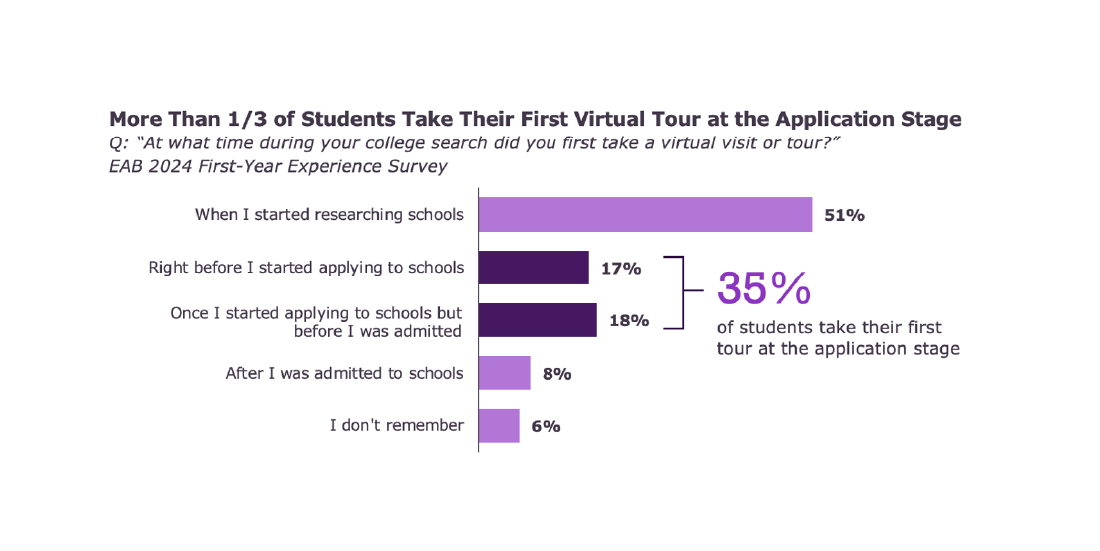
Capturing Leads from High School Fairs
During school fairs and outreach events, institutions can use automated systems to collect student details digitally and follow up with personalized emails or text messages to maintain engagement.
Managing International Student Applications
Automation streamlines the management of international student applications, from initial inquiry to enrollment. Institutions can track response times, conversion rates, counselor efficiency, and engagement metrics—all from a single dashboard. For example, the University of Pécs implemented an automated application management system that simplified document submission, application tracking, and communication, resulting in a threefold increase in international student enrollment over five years.
Collecting and Verifying Student Information
Counselors can use automation to collect student data—such as course interests, GPA, and contact details. This helps in personalizing course recommendations and sending relevant entrance test links based on eligibility.
Automated Reminders for Admission Officers
With numerous leads and follow-ups, admission officers can easily miss critical tasks. Automated reminders ensure timely follow-ups and escalate pending tasks to supervisors when needed. The University of West Florida deployed an AI-driven agent to interact with prospective students across multiple channels, leading to a 32% increase in graduate admissions yield.
Updating Interested Student Status
As soon as a student attends a campus tour or completes an application step, their profile status can automatically update to “Interested.” This keeps counselors informed and helps prioritize active leads.
Automating Entrance Test Links and Results
Automation can send entrance exam links, update students on their scores, and share results through multiple channels like email, SMS, or the student portal—ensuring transparency and quick communication.
Scheduling Interviews with University Heads
Once a student clears an entrance test, automation can schedule interviews by sending personalized links for Zoom or Google Meet. It can also manage no-shows and reschedule interviews automatically.
Sending Application Status Updates
Post-interview, automated notifications can keep students informed about their admission status—whether they’ve been selected, are under review, or were not accepted. This maintains clear communication and reduces student anxiety.
Generating Offer and Acceptance Letters
After selection, automation can create and send personalized offer letters with details like name, course, and credits. It also updates the student portal automatically once the letter is issued.
Follow-Up for Offer Letter Review and Fee Payment
Once students receive their offer letters, automated tasks remind counselors to follow up on fee payments, scholarships, and financing options. If a different team handles this step, automation reassigns the lead accordingly.
Automated Marketing and Promotions
Institutions can run automated campaigns promoting discounts, scholarships, or special offers via email, SMS, or WhatsApp. Automation also tracks engagement and updates student records when promotional codes are used. According to EducationDynamics’ Engaging the Modern Learner Report, 60% of students now use AI chatbots for college research, up from 49% just a year ago, highlighting the growing role of automation in student engagement.
Tracking Student Payments
Automation keeps finance teams and counselors updated on application or semester fee payments. Real-time alerts notify teams of successful transactions or failed payments, ensuring quick resolution and smoother financial management.
How to Set Up Workflow Automation for Your Educational Institution
Implementing workflow automation can transform administrative processes in your institution, making operations more efficient and improving the overall student experience. Here’s a step-by-step guide to get started:
Evaluate Your Workflow Needs
Before implementing automation, identify the tasks and processes that could benefit most from it.
- List administrative tasks currently done manually, such as student enrollment, document processing, financial aid management, or updating student records.
- Analyze common challenges, such as delays, bottlenecks, or frequent errors.
- Gather input from staff, faculty, and other stakeholders to understand pain points and opportunities for improvement.
- Prioritize workflows based on impact, frequency, time-consumption, and potential for error reduction.
Define Clear Automation Objectives
Decide what you want to achieve with automation.
- Reduce manual workload for repetitive tasks like data entry or form processing.
- Improve communication and response times.
- Increase data accuracy and minimize errors.
Clear objectives will guide your automation strategy and ensure alignment with your institution’s needs.
Select the Right Automation Tool
Research automation solutions designed for educational institutions.
- Look for platforms that are easy to use, scalable, and capable of integrating with your existing systems.
- Consider tools that allow workflow customization without extensive coding knowledge.
- Evaluate support services and training options provided by the vendor.
Design Your Workflows
Create workflows that reflect your institution’s specific processes.
- Map out the sequence of tasks, decision points, notifications, and data integrations.
- Use templates or drag-and-drop interfaces (if available) to simplify workflow creation.
- Ensure workflows align with your automation objectives.
Integrate With Existing Systems
Integration ensures smooth data exchange and coordinated workflow execution. Maximize the effectiveness of automation by connecting it with your current systems:
- Student Information Systems (SIS)
- Customer Relationship Management (CRM) platforms
- Document management or finance systems
Test and Refine Workflows
Before full deployment:
- Conduct thorough testing to identify bottlenecks, errors, or gaps.
- Gather feedback from users and stakeholders.
- Refine workflows to improve performance and efficiency.
Train and Support Users
Provide training to all staff involved in using automated workflows.
- Teach users how to interact with the platform, monitor processes, and make adjustments if needed.
- Offer role-based guidance and learning paths for different staff responsibilities.
- Provide ongoing support, including documentation, tutorials, and troubleshooting assistance.
By following these steps, your institution can successfully implement workflow automation, reduce manual workload, improve efficiency, and enhance the overall experience for both staff and students.
Top 24 Education Workflow Automation Tools in 2025
Workflow automation tools are revolutionizing education by streamlining grading, enrollment, communication, and data management—helping institutions save time, reduce manual work, and boost efficiency. Here’s a list of 24 powerful education workflow automation tools that can streamline operations and enhance productivity in 2025.
EssayGrader – AI-Powered Essay Grading Tool
EssayGrader revolutionizes the grading process by enabling teachers to evaluate essays up to 95% faster. What normally takes 10 minutes per essay can now be completed in just 30 seconds, without compromising accuracy.
Key Features:
- Create and customize grading rubrics to match your assessment criteria
- Bulk upload essays for efficient grading
- Detect AI-generated or plagiarized content
- Summarize essays automatically for quick review
Benefits:
- Saves significant time for teachers
- Ensures fair, consistent, and accurate grading
- Improves feedback quality and turnaround time
Leap AI – No-Code Custom AI Automations
Leap AI empowers educators and administrators to automate tasks effortlessly — no coding required. Integrated with platforms like Zapier and Vercel, it allows users to build sophisticated automations that streamline educational operations.
Key Features:
- Seamless integration with popular tools and apps
- Supports AI-powered text, image, and audio automation
- Easy-to-use interface for creating custom workflows
Benefits:
- Eliminates repetitive manual work
- Enhances productivity across academic and administrative functions
- Saves time by connecting existing digital tools
IBM Watson & Business Automation Workflow
IBM Watson combines artificial intelligence and automation to enhance institutional performance. Its Business Automation Workflow system unifies digital processes, improving coordination and insights across departments.
Key Features:
- Generative AI tools for analytics and data processing
- Automation for administrative and academic workflows
- Cloud and on-premises deployment options
Benefits:
- Boosts institutional productivity and decision-making
- Enables seamless collaboration across departments
- Provides advanced analytics for continuous improvement
AWS AI Services – Cloud-Based AI for Education
Amazon Web Services (AWS) offers a range of AI-powered solutions designed to automate and optimize educational workflows. From document management to data analysis, AWS supports smarter operations for modern institutions.
Key Features:
- Computer vision for image-based document processing
- Natural language processing for automated data extraction
- Machine learning models for predictive insights
Benefits:
- Simplifies document and data management
- Enhances learning and administrative efficiency
- Enables intelligent insights for better decision-making
Microsoft Azure AI – Cognitive Automation for Education
Microsoft Azure AI equips educational institutions with advanced cognitive automation tools to streamline documentation and enhance learning outcomes.
Key Features:
- Document intelligence to extract text, tables, and key-value pairs
- AI-powered text and image recognition
- Seamless integration with Microsoft’s education ecosystem
Benefits:
- Reduces time spent on administrative paperwork
- Improves data accuracy and accessibility
- Enhances digital learning experiences through intelligent automation
Google Workspace for Education – Collaboration and Workflow Suite
Google Workspace for Education is a powerful productivity and collaboration suite that simplifies communication and learning in schools and universities. It integrates tools like Gmail, Classroom, Drive, Docs, Sheets, Meet, and Forms, enabling seamless collaboration between educators and students.
Key Features:
- Google Classroom for managing assignments and feedback
- Google Meet for online classes and meetings
- Docs, Sheets, and Slides for collaborative work
- Secure cloud storage with Google Drive
Benefits:
- Encourages real-time communication and teamwork
- Provides a centralized platform for document sharing and tracking
- Enhances remote and hybrid learning experiences
ServiceNow – AI-Powered Workflow Management for Education
ServiceNow helps educational institutions streamline complex administrative processes with AI-driven workflow automation. It enables seamless management of operations, requests, and communications across departments.
Key Features:
- Unified platform for workflow automation
- AI and analytics for performance insights
- Integration with existing campus systems
Benefits:
- Reduces manual workload and administrative errors
- Enhances staff productivity and student experience
- Provides better visibility into institutional processes
Salesforce Einstein AI – Intelligent CRM and Automation for Education
Salesforce Einstein AI is an advanced artificial intelligence layer within Salesforce that supports predictive analytics, automation, and personalized engagement.
Key Features:
- Predictive analytics and intelligent data insights
- Automated workflows for student engagement
- Integration with Salesforce CRM tools
Benefits:
- Enhances student engagement through personalized communication
- Improves decision-making with real-time data
- Automates repetitive administrative and marketing tasks
Alibaba Cloud – Scalable AI and Data Solutions for Education
Alibaba Cloud provides robust cloud computing and AI solutions for managing educational data efficiently. It enables institutions to scale their operations while maintaining high security and reliability standards.
Key Features:
- Machine learning models for data-driven insights
- Data intelligence dashboards and reporting tools
- Scalable and secure cloud infrastructure
Benefits:
- Enhances analytics and performance tracking
- Improves operational agility and data security
- Supports digital transformation initiatives in education
MonkeyLearn – AI-Powered Text Analysis for Education
MonkeyLearn simplifies data analysis by using AI to process and categorize text-based feedback. It helps educators and administrators better understand student sentiments and identify key areas for improvement.
Key Features:
- Text classification and sentiment analysis
- Custom AI model creation
- Data visualization tools for reports
Benefits:
- Helps track student feedback and satisfaction levels
- Saves time in data analysis and reporting
- Enables data-backed decision-making for academic improvement
DataRobot – Unified AI Platform for Educational Insights
DataRobot offers an end-to-end AI platform that supports predictive and generative workflows. It allows institutions to leverage AI for academic forecasting, admissions management, and student success analytics.
Key Features:
- Automated machine learning (AutoML)
- Predictive modeling for education data
- AI integration across institutional systems
Benefits:
- Streamlines both academic and administrative workflows
- Enhances accuracy in data-driven decisions
- Supports predictive insights for better student outcomes
H2O.ai – Open-Source AI Platform for Education
H2O.ai is an open-source artificial intelligence platform that empowers educational institutions to build, train, and deploy AI models with ease. Designed for accessibility and scalability, it enables organizations to explore AI-driven innovations without high costs.
Key Features:
- AI model development and deployment
- Cloud-based analytics and data processing
Key Benefits:
- Ideal for institutions seeking affordable AI solutions.
- Encourages educators and researchers to experiment with data-driven projects and insights.
Oracle Cloud Infrastructure (OCI) – Smart AI Services for Education
Oracle Cloud Infrastructure provides powerful AI and machine learning services designed to automate and optimize educational workflows. With prebuilt models and generative AI tools, OCI helps institutions improve operational efficiency and data accuracy.
Key Features:
- Prebuilt machine learning (ML) models
- Generative AI for smart automation and decision-making
Key Benefits:
- Enables faster and more accurate handling of academic and administrative data.
- Automates repetitive manual tasks, freeing staff time for student-focused initiatives.
OpenAI – Advanced Language Intelligence for Learning
OpenAI’s advanced language models provide powerful APIs that educational developers can integrate into apps and platforms. These tools support personalized learning, intelligent tutoring, and automated feedback systems.
Key Features:
- Text summarization and content generation
- Language understanding and contextual feedback
Key Benefits:
- Offers tailored feedback and study support for students.
- Helps educators generate lesson summaries, quizzes, and educational materials quickly.
Clarifai – Computer Vision Solutions for Education
Clarifai provides AI-powered computer vision tools that help educational institutions manage and analyze visual data effectively. From analyzing images and videos to detecting visual patterns, Clarifai supports digital transformation in education.
Key Features:
- Image, video, text, and audio data analysis
- AI modeling for multimedia content
Key Benefits:
- Enables educators to create engaging, visual learning experiences.
- Automates organization and analysis of digital learning materials.
RapidMiner – Collaborative AI Platform for Educators
RapidMiner is a collaborative AI and data science platform that allows educators and researchers to build, test, and share AI models. It enhances teamwork and promotes innovation within academic institutions.
Key Features:
- Shared repositories for AI projects
- Scheduling, automation, and project management tools
Key Benefits:
- Enables teams to work together on AI projects and research.
- Simplifies data workflows for faster academic insights.
Meritto – Unified Education Management Platform
Meritto is an all-in-one platform designed to help educational organizations manage marketing, admissions, student engagement, and analytics in one place. Built specifically for the education sector, it supports institutions of all sizes.
Key Features:
- Marketing automation and student management tools
- Centralized analytics dashboard for performance tracking
Key Benefits:
- Helps institutions attract and retain more students efficiently.
- Automates key administrative processes across departments.
Canvas – Flexible Learning Management System (LMS)
Canvas is an open and customizable LMS designed for both hybrid and fully online learning environments.
Key Features:
- Create and manage courses easily
- Access detailed analytics on student performance
- Mobile-friendly interface for on-the-go learning
- Grading tools for streamlined assessment
Benefits:
- Offers a flexible learning setup for institutions and students
- Simplifies tracking of student progress and performance
Blackboard – Comprehensive LMS Solution
Blackboard is a widely used LMS that supports digital learning, course management, and assessments.
Key Features:
- Manage courses, assignments, and exams
- Collaboration and communication tools for students and teachers
- Analytics to track engagement and learning outcomes
Benefits:
- Supports diverse teaching and learning styles
- Provides actionable insights through learner analytics
Moodle – Open-Source Learning Platform
Moodle is a free, open-source LMS that allows institutions to build secure and personalized learning environments.
Key Features:
- Collaborative tools for group learning
- Secure authentication and detailed reporting
- Flexible course creation and enrollment options
Benefits:
- Fully customizable to meet institutional needs
- Supported by a large community of developers and educators
Schoology – Collaborative LMS for K–12 and Higher Education
Schoology combines LMS features with social networking functionality to foster engagement.
Key Features:
- Course management and attendance tracking
- Parent access for monitoring student progress
- Communication and collaboration tools
Benefits:
- Encourages collaboration between students, teachers, and parents
- Simplifies communication and engagement within the learning community
Edmodo – Social Learning Network
Edmodo is a global education network connecting teachers, students, and parents.
Key Features:
- Class management and assignments
- Quizzes and assessments
- Communication and resource-sharing tools
Benefits:
- Creates a connected learning environment
- Facilitates collaboration and easy sharing of learning materials
Zapier – App Integration and Workflow Automation
Zapier allows institutions to automate repetitive tasks by connecting multiple apps without coding.
Key Features:
- Integrates with over 3,000 apps
- Set custom triggers and actions for automation
Benefits:
- Reduces time spent on repetitive administrative tasks
- Simplifies workflows by connecting different educational tools seamlessly
Cflow – Workflow Automation for Educational Institutions
Cflow helps schools and colleges automate essential administrative workflows quickly and efficiently.
Key Features:
- Student information and record management
- Process tracking and approval automation
- Streamlined workflow design for various administrative tasks
Benefits:
- Enhances transparency and accountability
- Reduces paperwork, delays, and manual errors in processes
How to Choose the Right Education Workflow Automation Solution
Selecting the right workflow automation tool for your school can streamline administrative tasks, improve communication, and enhance the overall experience for students, staff, and parents. Here’s a step-by-step guide:
Assess Your School’s Workflow Needs
Start by evaluating your school’s current processes to identify bottlenecks and areas that need improvement. Determine the goals for automation. For example, if you want to enhance admissions, look for solutions that can:
- Automate communication with prospective students and families
- Streamline application processing
- Facilitate onboarding
Consider the needs of all stakeholders:
- Teachers
- Students
- Administrative staff
- Parents
Gathering input from each group will help you identify the features that will benefit them the most.
Identify Essential Features
Workflow automation solutions vary in functionality. Some focus on specific tasks, while others serve as a central hub for multiple departments. Look for features that match your school’s needs. Examples include:
- Automated notifications to inform students and families about deadlines
- A database of common inquiries with automated responses
- Tools for streamlining repetitive administrative tasks
Consider how these features can improve efficiency and help you achieve your school’s objectives.
Prioritize Security
Automation systems store sensitive information, so security should be a top priority. Protect data such as:
- Student records
- Financial information
- Staff personal details
When evaluating vendors, check:
- Data storage and encryption methods
- Access control policies
- Role-based access control (RBAC) features to limit exposure based on user roles
Strong security measures safeguard confidential information and reduce the risk of data breaches. In fact, nearly two-thirds of educational institutions reported cyberattacks in 2024, with average ransom payments reaching millions, highlighting the urgent need for robust security protocols.
Look for Customizable Options
Every school has unique processes, so your automation solution should be flexible and adaptable. Choose a platform that can scale with your school’s needs, such as:
- Adjusting workflows for new student enrollments each year
- Reconfiguring processes without extensive manual intervention
- Flexible and customizable solutions help your school meet evolving requirements and save time in the long run.
By following these steps, you can select a workflow automation tool that fits your school’s needs, enhances efficiency, and supports a better experience for students, staff, and parents.
Conclusion
Workflow automation is transforming higher education by making processes faster, more accurate, and more efficient. From grading and admissions to communication and financial aid, automation helps staff save time and focus on what really matters—supporting students. By adopting these smarter solutions, institutions can improve productivity, enhance the student experience, and stay ahead in an increasingly digital academic environment.
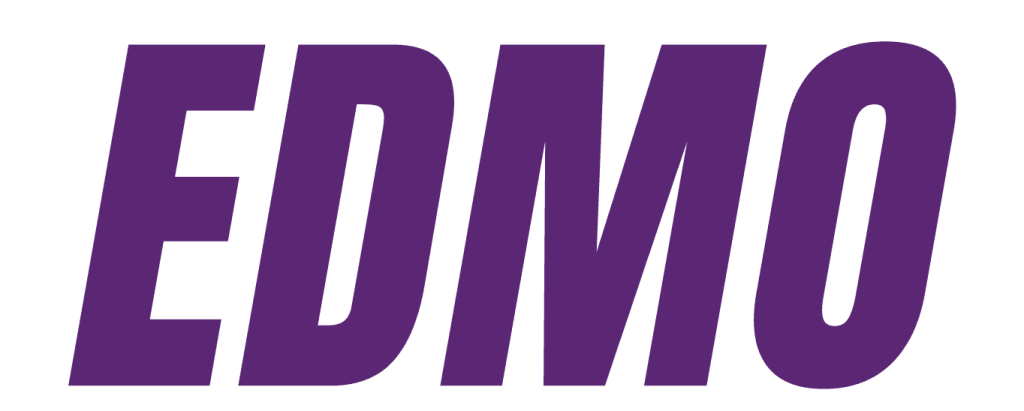
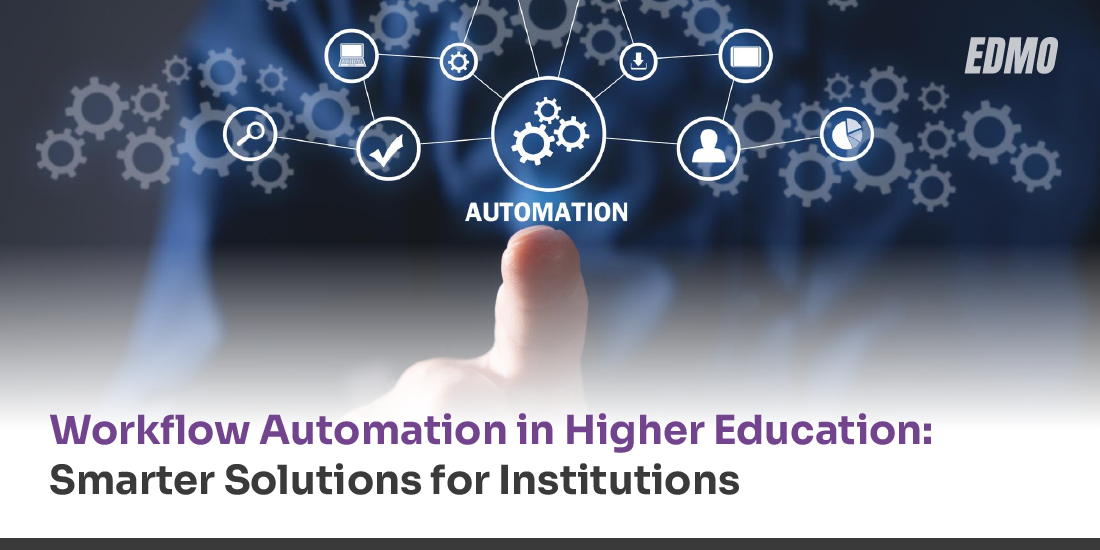


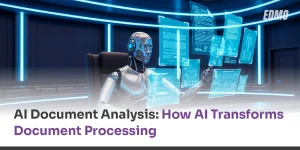


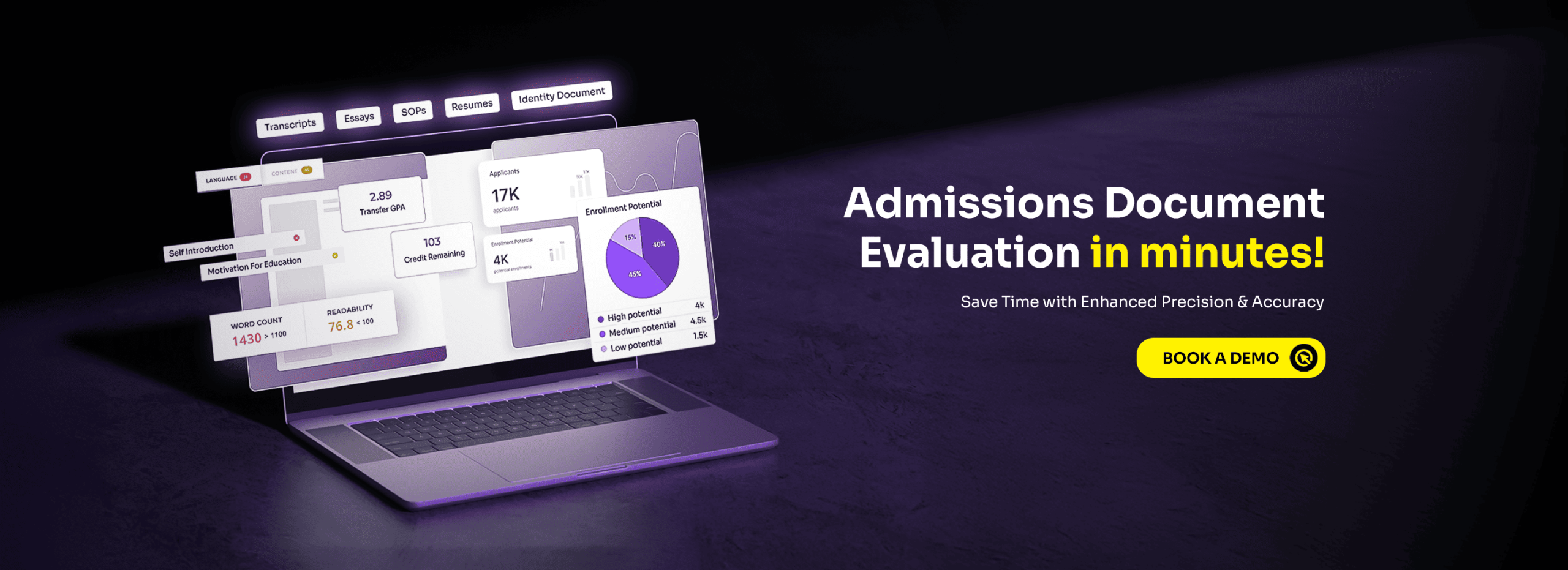
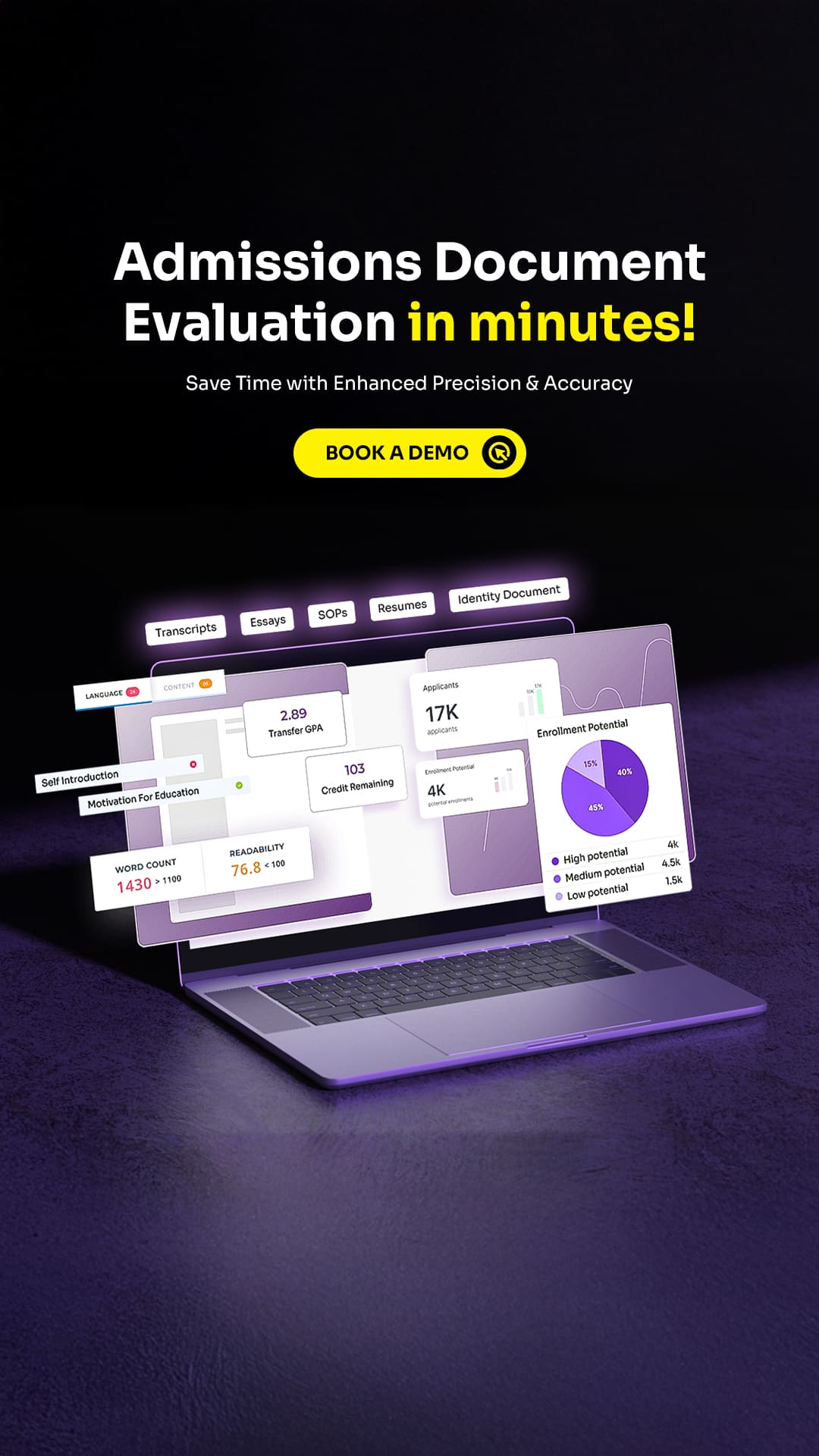
No comments yet. Be the first to comment!
Leave a Comment